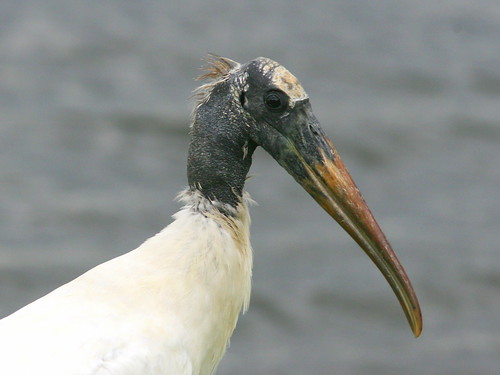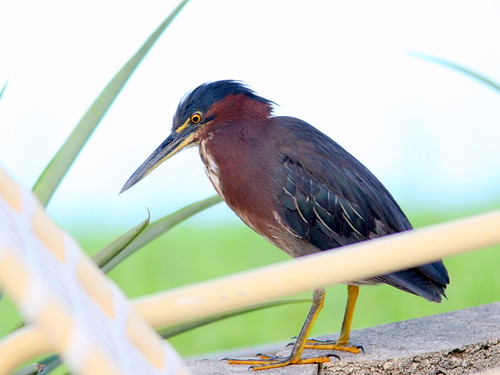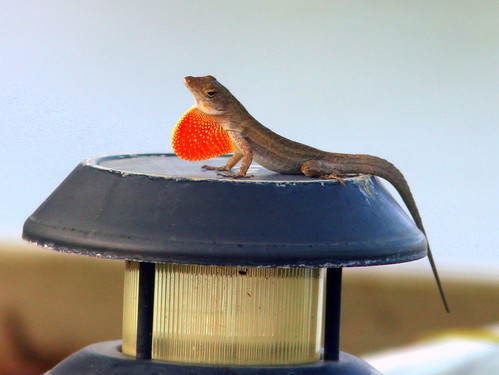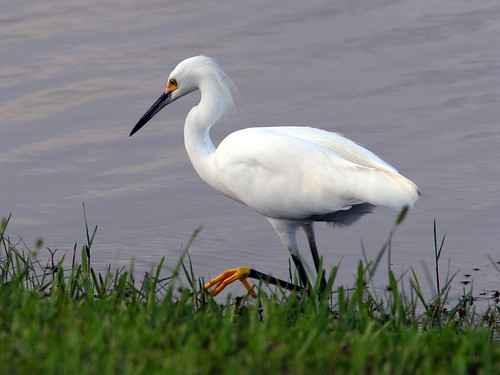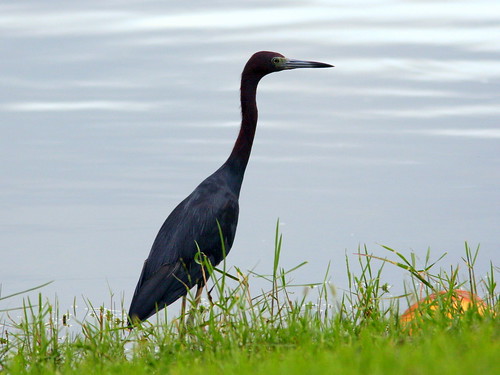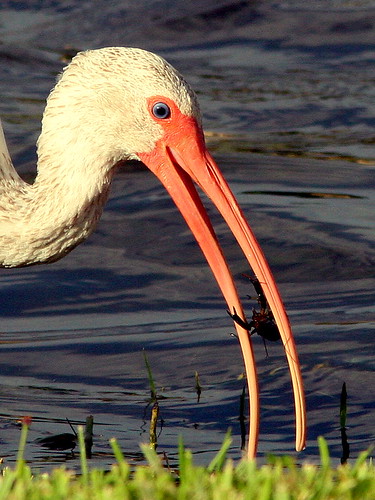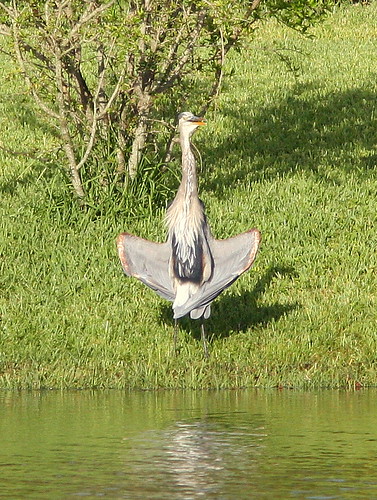| Birding is a fascinating, exciting, challenging game. It requires and encourages ever-growing skill. It may involve us in great adventures and wide travel, sometimes in difficult terrain.Seeking new birds to check off on our life lists may draw us further into the lives of these birds, challenging us to learn more about their life cycles, their behaviors, and ecology; and as our ecological perspectives expand, we may be stimulated to become more involved in conservation work, to protect the habitats of the many species we enjoy. (Burton S. Guttman, Birding, February 2004) |
I heartily endorse BirdChaser’s advice that a healthy birder is one who attains the Recommended Daily Allowance (RDA) of 20 bird species. However,do not follow BirdChaser’s rule blindly, as you may risk missing your overall goal of balanced nutrition. Just as all our daily calories should not come from M&Ms, it is healthier to adhere to the Birder’s Nutritional Pyramid (BNP). Just remember that 2 + 4 + 6 + 8 = 20, and proceed backwards up to the top of the pyramid.
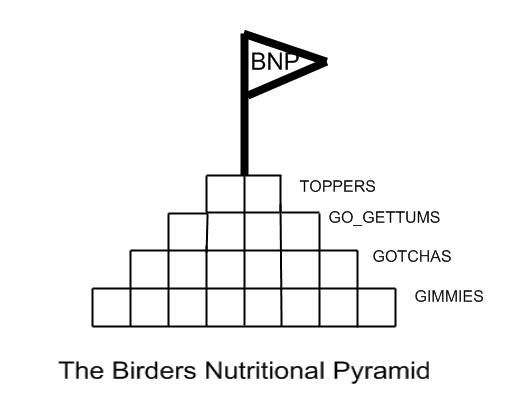
Start by making a list of all the birds that you are likely to see at least once in any ordinary week during the current season. These will be the raw materials, the NUTRIENT LIST for your personal BNP.
GIMMIES (Eight that must be seen)
Then, select eight “meat and potatoes” birds from the NUTRIENT LIST, to make up the base of the pyramid.No substitutions are permitted! Depending upon the season and location, this is the group of “gimmie” species that are guaranteed to be seen almost any time every day, usually through the windows, or without moving far from the house. You MUST see all eight species in order to attain your BNP, or you have failed in your RDA diet plan. Depending upon where you live, the list may have to be changed three or even four times during the course of a year. Here in South Florida during the breeding season, my eight “sure finds” include these species, usually visible from inside the house: Rock Pigeon,Boat-tailed Grackle, Common Grackle, Northern Mockingbird, Mourning Dove, Eurasian Collared-Dove, Loggerhead Shrike and Blue Jay. The Palm Warbler is ubiquitous during the winter in Florida, but absent during the warmer months. In New Mexico, the migrating Rufous Hummingbird was a “gimme” from early July into September, but it usually skipped the Rocky Mountains in favor of the West Coast as it followed the flowers north in early spring.
GOTCHAS (Very likely to be seen)
The second tier of six species includes those birds that are also very common most times of day and do not take much additional effort, such as sitting out on the front steps or the back porch, or waiting for the thermal updrafts to develop. If you fail to see all of these, your nutritional balance will not be upset if you “borrow” items from the NUTRIENT LIST that you expected to be higher up the BNP. My six “easy” summer species are: Great Blue Heron, Little Blue Heron, Tricolord Heron, Great Egret, Snowy Egret and White Ibis.
GO-GETTUMS (Four, with four more alternative species that will take some effort, but must be seen)
Next to the top of the Birder’s Nutritional Pyramid is a serving of four essential ingredients that you must find, or substitute from a list of four similarly elusive species. For me, bagging these four may take a longer walk around the block, or even a short drive to the shopping center: Turkey Vulture, Black Vulture, Double-crested Cormorant, and White-winged Dove. If you miss some, to avoid upsetting your nutritional balance, you are permitted to choose FOUR AND ONLY FOUR pre-selected species from the NUTRIENT LIST. Right now, for me, they may be Red-winged Blackbird, Monk Parakeet, Killdeer, or Green Heron.
TOPPERS (Fulfills your RDA and BNP)
That leaves the top two building blocks, which should be saved for the best birds of the day, but can be filled by any “leftovers” from the NUTRIENT LIST, generally those species that you may expect to see at least once a week in season. Even better, it may be an unexpected rarity that is not on the list. Here in South Florida, sometimes depending upon the time of year, these might include: Mottled Duck, Anhinga, Osprey, Wood Stork, Pied-billed Grebe, Tree Swallow, or occasional but reliable neighboring breeders and post-breeding wanderers, such as: Ring-billed Gull, Least Tern, Barn Swallow, Purple Martin, Cliff Swallow, Bank Swallow, Rough-winged Swallow, Red-shouldered Hawk, Kestrel, Yellow-crowned Night-Heron, Glossy Ibis, Northern Flicker, Red-bellied Woodpecker, European Starling, Bald Eagle, Fish Crow, and Common Moorhen.
If your pyramid looks a little flat, that is because you have saved space for a single block on top, to be capped after you exceed your RDA, by Daily Species #21. Then, get out to your favorite birding patch and build a “flagpole” of additional species– but, most of all, have fun!
This week, our back yard has been a place of unusual avian beauty. A Wood Stork peered into our rear sliding door from only five feet away. By the time I got my camera it had moved a dozen steps away, but I still could not fit its entire body into my telephoto lens’ field of view:
A Green Heron foraged for anoles on our patio, and my view was partially obstructed by lawn furniture:
This Brown Anole escaped, and now celebrates by distending its dewlap:
As it was getting dark, a Tricolored Heron fished rather frantically at the edge of the lake:
A Snowy Egret’s harsh white plumage was softened with the approach of sunset:
It was accompanied by a Little Blue Heron:
At first, I thought this White Ibis had picked up a fishing lure:
…but it turned out to be a crayfish, which, after toying with it, the bird delicately swallowed:
“Flasher!” Across the lake from our home, a Great Blue Heron soaks in the last rays of the day:













